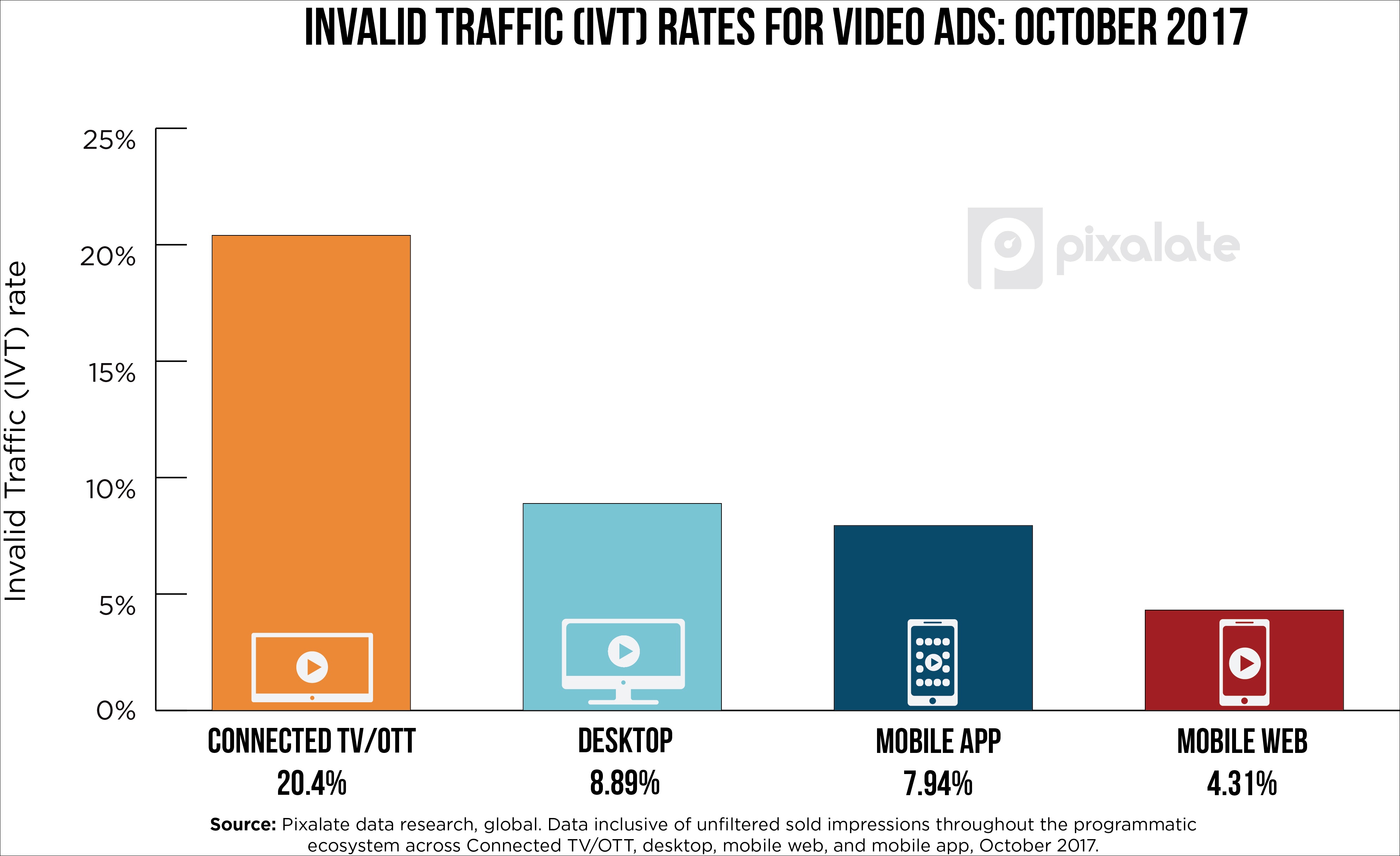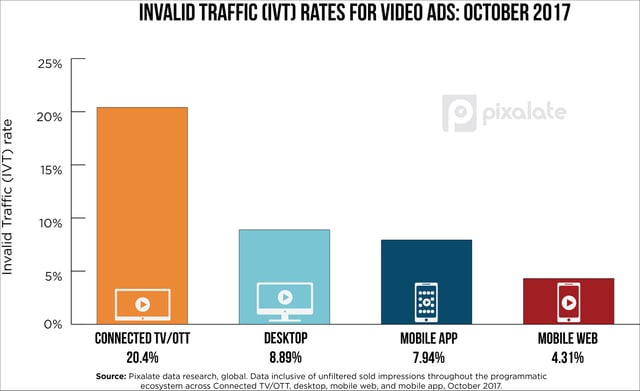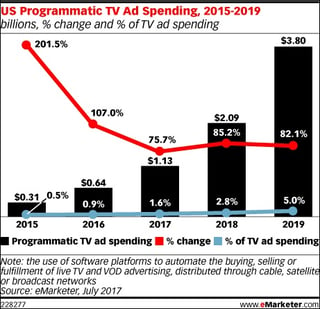
"Fraudsters are pivoting to video, which is bad news for publishers looking to siphon cash from the growing pot of video ad spend," wrote Digiday in a recent article overviewing the state of video ad fraud.
According to eMarketer, digital video ad spend will reach $15.42 billion this year, rising to $22.18 billion by 2021. But despite this rosy outlook, invalid traffic remains a concern, and the fraudsters are set to profit if marketers don't get smarter about the risks of ad fraud in video.
Video is a cross-device, cross-screen form of entertainment, and the fraudsters are active in all mediums.
Invalid Traffic (IVT) rates for video ads vary across devices
 Video IVT rates highest for Connected TV/OTT: Over 20%
Video IVT rates highest for Connected TV/OTT: Over 20% ads in October 2017 were measured as invalid, according to Pixalate research.
ads in October 2017 were measured as invalid, according to Pixalate research.Nearly 97% of Connected TV/OTT ads are video. This is a premium format and can draw extremely high CPMs, which attract fraudsters.
According to eMarketer, programmatic TV ad spend will nearly double from $1.13 billion this year to $2.09 billion in 2018. It will then rise to $3.8 billion in 2019.
Marketers should shore up their Connected TV/OTT anti-fraud practices, or else the pending boom in ad spend will cause a lot of money to be lost to fraudsters.
As Pixalate's data research into October 2017 programmatic video trends reveals, IVT for video ads can vary greatly depending on the device and environment.
Notably, Connected TV/OTT — one of the environments set for the largest increase in video ad spend over the next half-decade — is one of the riskiest in terms of invalid traffic.
Want more data-driven insights? Sign up for our blog!
*By entering your email address and clicking Subscribe, you are agreeing to our Terms of Use and Privacy Policy.
These Stories on Mobile
*By entering your email address and clicking Subscribe, you are agreeing to our Terms of Use and Privacy Policy.

Disclaimer: The content of this page reflects Pixalate’s opinions with respect to the factors that Pixalate believes can be useful to the digital media industry. Any proprietary data shared is grounded in Pixalate’s proprietary technology and analytics, which Pixalate is continuously evaluating and updating. Any references to outside sources should not be construed as endorsements. Pixalate’s opinions are just that - opinion, not facts or guarantees.
Per the MRC, “'Fraud' is not intended to represent fraud as defined in various laws, statutes and ordinances or as conventionally used in U.S. Court or other legal proceedings, but rather a custom definition strictly for advertising measurement purposes. Also per the MRC, “‘Invalid Traffic’ is defined generally as traffic that does not meet certain ad serving quality or completeness criteria, or otherwise does not represent legitimate ad traffic that should be included in measurement counts. Among the reasons why ad traffic may be deemed invalid is it is a result of non-human traffic (spiders, bots, etc.), or activity designed to produce fraudulent traffic.”

